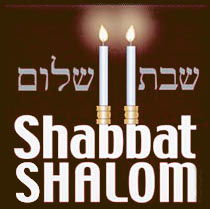Succot
Chag Sameach! The festival of Succot commemorates the shelter that G-d provided the Jewish people with in the wilderness for forty years (Succah 2). By dwelling in succah's for the week of Succot, we remember how for forty years in the wilderness G-d protected the Jewish nation with the ‘clouds of glory.’ Succot is a time of rejoicing and happiness in G-d’s concern for our well being.
The biblical name of the festival is, "The Feast of Ingathering, it is a festival that starts on the 15th Tishrei. Succot was regarded as a thanksgiving for the bounty of nature in the year that had passed.
Succot became one of the most important feasts in the religion, maybe because of its huge attendance, Succot became the appropriate time for vital state ceremonies. Moses instructed the children of Israel to gather for a reading of the Law during Succot every seventh year (Devarim 31:10-11). We learn that King Solomon dedicated the Temple in Jerusalem on Succot (Kings I 8; 2 /Chronicles 7). And Succot was the first sacred occasion observed after the resumption of sacrifices in Jerusalem following the Babylonian exile (Ezra 3:2-4). The festival is also described in Parshah Emor in the book of Vayikra.
A major element of Succot is the shaking of the ‘four species,’ the Etrog (citron), Lulav ( palm branch), the Hadasim (myrtle leaves) and the Aravos (willow branches). By holding all four of the species together during Succot, we symbolize the need of a person to utilize all his faculties in the service of G-d.
As well as this, each of the four species symbolizes a different type of Jew: - The Esrog (which has a good taste and pleasant aroma) symbolizes an individual who is learned in Torah and righteous. An example of these people in the Tanach would be Moshe who was both exceedingly humble and also spent 120 days in heaven learning the entire Torah. Another person that fits in this category is King David as all his thoughts and acts were in the service of Hashem and he was extremely learned in Torah. - The Myrtle (which has a pleasant aroma but has no taste) symbolizes a righteous individual who is deficient in Torah. An example of this is the Judge ‘Yiftach’. He was a sincere, G-d fearing man, who as a youngster was driven out of his town by his brothers and his fellow people for no good reason. The leaders of the town did not stick up for him and he left Israel in order not to retaliate, thus he was worthy of becoming a leader as Hashem’s presence rests among the man who walks away from an argument when he is in the right. He was worthy to be the judge for the Jewish people for six years however his lack of Torah knowledge later on proved to be his downfall as a leader (Taanit 4). The Lulav (which has a good taste but no aroma) symbolizes a Torah scholar who is deficient in good deeds. An example of this could be Korach, he knew and studied torah to a high level, however he instigated a rebellion against the leader of the Jewish people, Moshe, whilst in the Wilderness (Nedarim 39). The Willow (which has no taste and no aroma) symbolizes an individual who lacks good deeds and Torah.
Succot is the only festival that our prayers describe as ‘the time of our joy.’ This is because Succot is a time when the individual and the nation have succeeded in attaining a long sought objective, both in a physical and spiritual sense. Agriculturally, it is the time when the summer’s produce is gathered. It is also the culmination of the Tishrei process of atonement and repentance, when we succeed in cleansing ourselves of sin.
Hope you all have a lovely Shabbat and Succot, Chag Sameach! From Michael at Ohr Sameach yeshiva in Jerusalem.

 Share on Twitter
Share on Twitter Visit our Facebook page
Visit our Facebook page